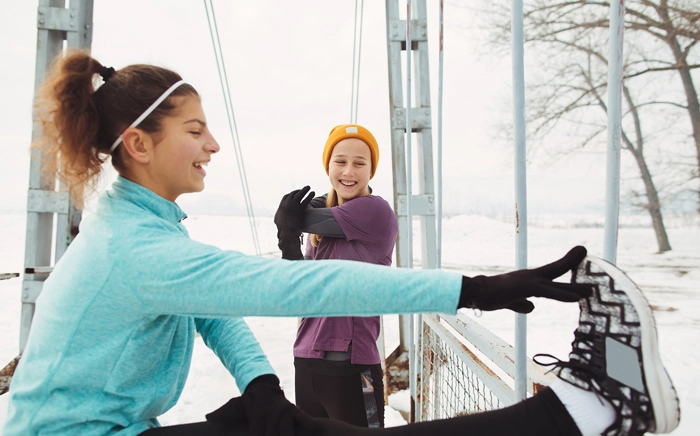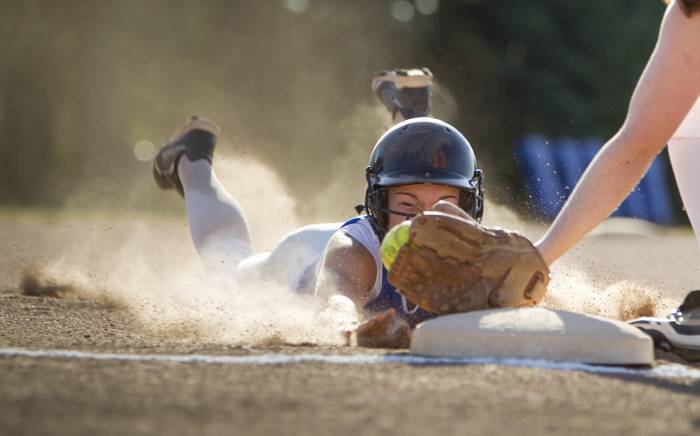
Although the weather is colder, it doesn't mean your kid has to give up on outdoor running and exercising. Many runners and athletes still train outside during the winter months. It may be tempting to stop running or switch to indoor activities to avoid the cold, but young athletes who have sports, races, or track and field events in the spring should try to keep running outside if they can because it's important to maintain their body's endurance.
Here are some tips and tricks to help your dedicated young athlete:
Choose appropriate clothing:
- Footwear is super important! You need to keep good traction on what could be some slippery terrain. You also need to keep your feet warm. Avoid shoes with mesh as the outer layer. (This is super common in most everyday running shoes.) The mesh allows snow, ice and cold in! Try to find shoes with minimal mesh and possibly a more resistant Gore-Tex. It’s also helpful to look for moisture-wicking socks.
- Pick your clothes wisely. You want clothes that will keep you warm but won't make you overly sweaty. At the start of a run, you should aim to be slightly cool because you will only get warmer as you start to exert energy.
- Always wear a hat and gloves. Runners should always wear them when it’s below 40 degrees.
Warm-up:
- Do a quick warm-up without breaking a sweat, so you don't get cold. Go up and down stairs, jump rope, etc. This will help get your muscles going before you start.
Don't worry about pace and speed:
- There are several reasons why you can't run as fast when it is cold: wind, snow/ice, oxygen usage, to name a few. A runner’s focus should be on maintaining endurance rather than speed.
Adjust your routes and be safe:
- Running into the wind is hard! Try a few minutes into the wind and then a few minutes with the wind.
- Stay close to home. Should you slip and fall, it’s risky to be far away.
- Be aware of it getting dark. It gets dark earlier and faster in the colder months. Consider taking a flashlight or headlamp in case it gets dark earlier than expected. Reflective clothing is also helpful. Better yet, plan your runs during the day before it gets dark.
Continuing to run into the winter can be a rewarding experience, and following these rules can help keep your young athlete warm and safe.
 Terra Blatnik, MD, is a pediatric sports medicine specialist at St. Louis Children's Hospital. She specializes in the nonoperative treatment of all musculoskeletal sports-related conditions in pediatric and adolescent patients ages 5 and above. Dr. Terra Blatnik has always loved working with young athletes, making her role with the Young Athlete Center a great fit. She has three kids and loves exploring the city with her family when she isn't working. Her best advice to other moms is to keep your kids active, set a good example and get out and walk as a family.
Terra Blatnik, MD, is a pediatric sports medicine specialist at St. Louis Children's Hospital. She specializes in the nonoperative treatment of all musculoskeletal sports-related conditions in pediatric and adolescent patients ages 5 and above. Dr. Terra Blatnik has always loved working with young athletes, making her role with the Young Athlete Center a great fit. She has three kids and loves exploring the city with her family when she isn't working. Her best advice to other moms is to keep your kids active, set a good example and get out and walk as a family.








